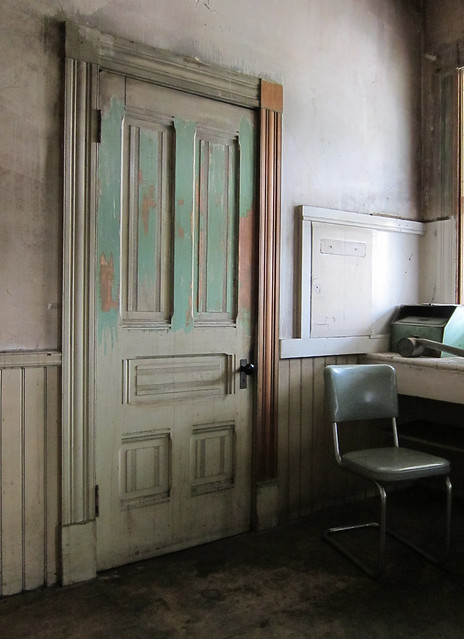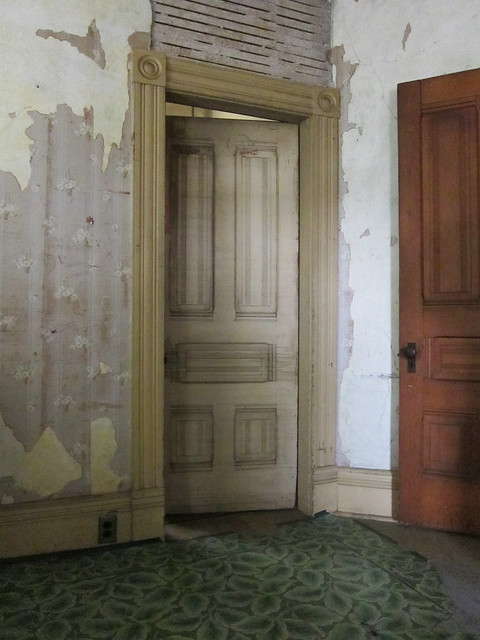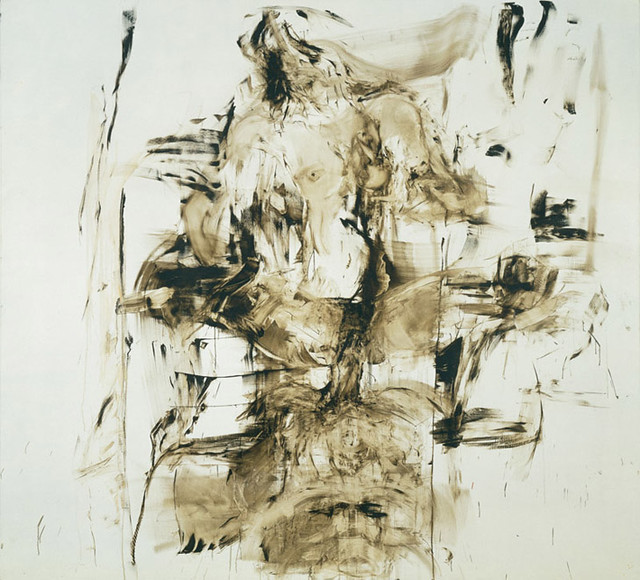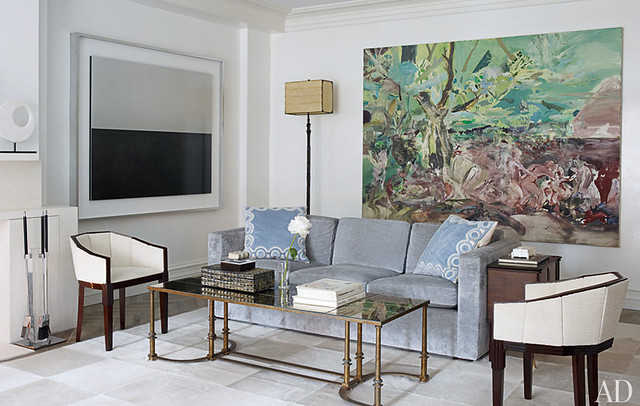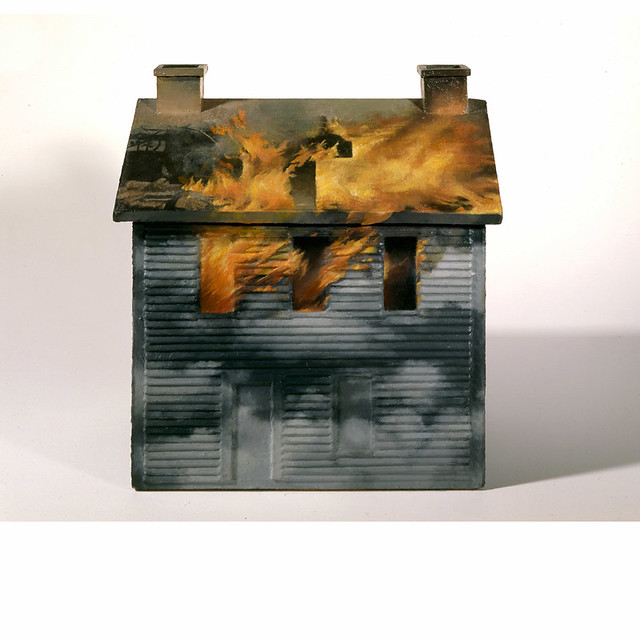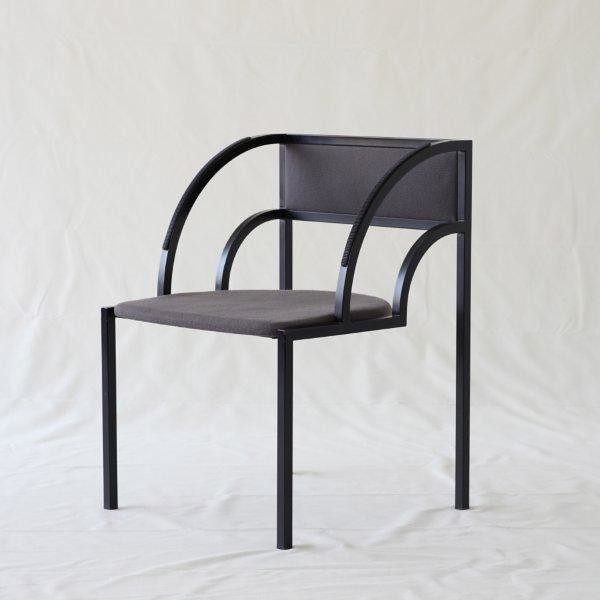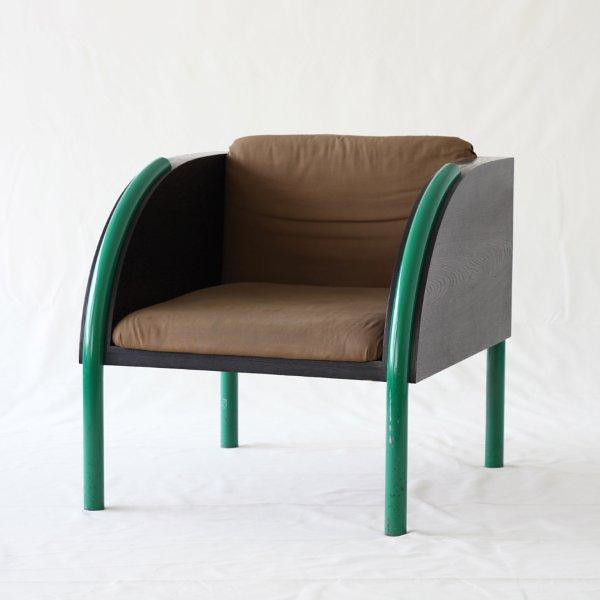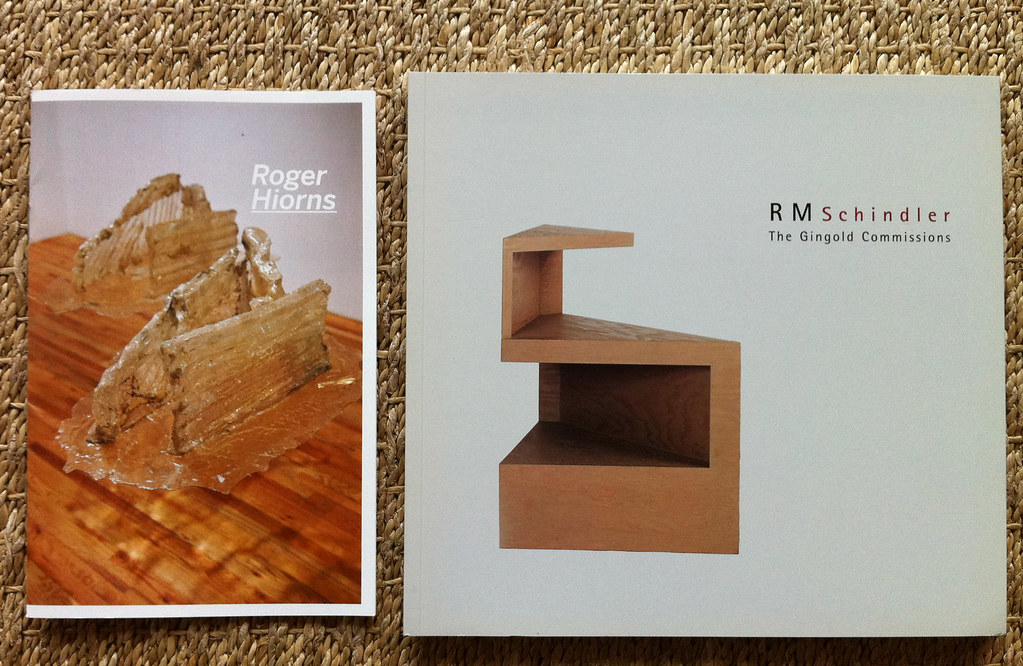A SLOW CONVERSATION ROLU &
YHBHS
"my belief that if you send a signal out into the world everyday
something will come back to Y O U."
-Matt Olson, ROLU
Primarily/Primary (After Carol Bove, Scott Burton and Sol Le Witt)
- ROLU with Ashley Helvey
ROLU will show new works as part of Noho Next 2011
at the ICFF (Intl Contemporary Furniture Fair) May 14-17.
-----------
Matt Olson and I crossed paths a few years ago now. I guess you could say ROLU was one of my gateway drugs into the blog world. It was late one night, when I discovered the ROLU portal: a divine place where art + design all come together so easily & perfectly. It was sites like ROLU, that pushed me harder: to dig, to research, and most of all, to reach out to the people at the other end of the computer.
It was probably over a year ago that Matt Olson and I began this conversation. This interview is beyond overdue! But honestly, it could not have happened at a better time since ROLU's calender is full of collaborations and events happening this weekend.
I'm psyched to finally post this slow conversation with Matt Olson, of ROLU. If you are in New York this week, please go check out their work at NOHO NEXT. It's gonna rock.
- David John, YHBHS

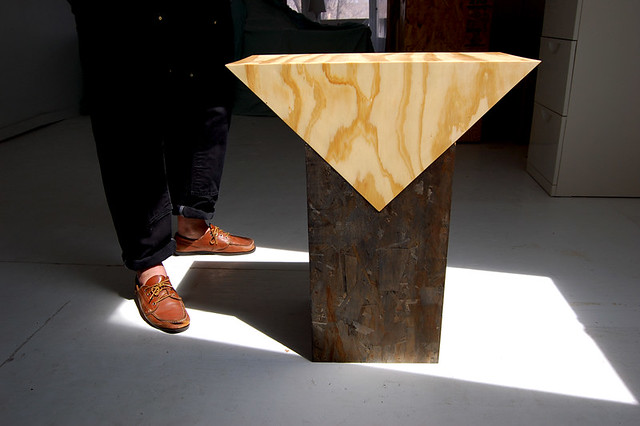

A SLOW CONVERSATION: ROLU and YHBHS
You were one of the first people that linked my blog onto your site. Your site was one of the early portals I had into these very specific design blogs. Can you talk about the why you started ROLU design blog, & the role that keeping on online blog has had in your design practice?
Matt: That's super cool to know! I was immediately taken by YHBHS's diversity and the connections you were drawing between theoretically different, but in my mind inherently related works. That was three years ago maybe? Still always awed by it.
I started a blog based on a simple premise: my belief that if you send a signal out into the world everyday something will come back to you. I wake up in the morning, I have a cup of coffee and I figure out something to post. It's almost ritual now. At its most basic level it's had a huge educational effect on me personally. The amount of learning has been immeasurable. In the abstract, it's woven its way into my/our work in mysterious and intangible ways too. There are times where it feels like some stream of conscious visual poem that's happening and it occasionally clicks and reveals its meaning. In one literal way, our furniture is in part a response to this visual river we are paying attention to and participating in... we're trying to reach into it and respond with something physical.
So you mentioned collaborations, is there new work coming out soon?
Yes, we just finished some new pieces. One is a night stand that was commissioned by PIN-UP Magazine, literally our favorite architecture magazine, it will be on view at Phillips de Pury in New York during the ICFF (Intnl Contemporary Furniture Fair) in New York. Some amazing other folks involved too... Jim Drain, Aranda/Lasch, Rafael de Cárdenas, ARCHITECTURE AT LARGE, Rich Brilliant Willing, Situ Studio... wow.
We are so honored to be in such great company! It will be available in an edition of four through the gallery. We also have new work at Noho Next an exhibit organized By Monica and Jill who do the great Sight Unseen. It's two chairs and a table called Primarily/Primary (after Carol Bove, Scott Burton and Sol Le Witt) it features two wool felt pieces by textile artist Ashley Helvey. She's amazing. These pieces continue to explore some of the same ideas we've been interested in regarding very fluid and quick reactions to work were influenced by. And this idea of high art concepts expressed through simple raw materials.
The furniture / blog is only a small part of your daily activities. You also maintain a landscape architecture studio, that was featured in DWELL Magazine. Do you ever sleep?
I truly do work a lot. You've heard that saying “Love what you do, never work a day in your life”? A lot of the time it feels that way to me. Sometimes not. The studio takes on and initiates lots of projects. We started eight years ago as a residential landscape design and construction company but from the start had plans to wander. We still do a ton of landscape related work and love it. Both in Minneapolis and increasingly with clients nationally.
We have worked on everything from designing a “social media driven post-internet” ice cream store at an amusement park with an architecture studio we frequently collaborate with to a performance based participatory art project coming up at the Soap Factory a gallery here in Minneapolis that was commissioned by Northern Lights MN. Really broad range.
We really believe in collaboration as a core value of the studio. We have active projects in the works with Ashley Helvey a textile artist we love, Peter Nencini whose work is mind blowing, Laurel Broughton of WELCOME Los Angeles, Eric Timothy Carlson a member of the Hardland/Heartland collective just to name a few.

2010 flyer for the ROLU + Mondo Cane show...
Your show last year at MONDO CANE in New York. I'm sad I wasn't in New York, but will you talk about that show, and the works that were shown? Did you fabricate the works while in New York? Plywood?
The show at MONDO CANE was an amazing thing for us. We'd been discussing and designing furniture pieces for a couple years but never had the time or impetus to develop it. We started making a couple prototypes and they lived in our studio. Our friend Mylinh Trieu Nguyen saw a photo of one on our blog and she liked it. It led to us designing the furniture and basic environment for the exhibition of her project General Public Library at Art In General in New York. This was really fun for us and we finally had a reason to get serious about exploring our ideas.
While we were developing the work for that exhibit, we made a group of theoretically related pieces in fits and starts over a few weeks, rapidly building and changing as we went. Our initial idea was an attempt to follow in the footsteps of Enzo Mari and his Autoprogettazione project. We were talking with a few of our favorite graphic designers about doing a print on demand book that kept growing and evolving as new ideas were created, by both us and the people in our internet community we were hoping might participate.
We were trying to think of it as an “open source” furniture project. This is important in part because it's where we collided with and fell in love with the simple hardware store materials. I also think it's interesting that our initial experiments are really related to ideas and images I was finding through blogging. Our connection to Patrick Parrish from MONDO CANE who does Mondo Blogo is also related to blogs... and bizarro-world kismet. I wrote an email to Patrick saying how much I like his blog and oddly, at almost the same precise moment, he had added ROLU blog to his links and was writing to me. In literally the next email, he asked me to do a show of our furniture.
We built all the pieces in NYC in about ten days before the show. And while we were there, we also built pieces for IFS Ltd-- a project for the NY Art Book Fair at PS1 MoMA. Needless to say, my partner in ROLU, Mike Brady, and one of our employees, Joe Mollen, worked almost around the clock to pull it off. Our opening at MONDO CANE was such a great night.
I wish you'd have been there too! So many great people from our circle of blogs came, Andy Beach (Reference Library), Mary Manning (Unchanging Window), Lee Cerre (2 or 3 Things), Matt and Mary (Matt & Mary :-), Doug Johnston (Hawktrainer) Felix from PIN-UP Magazine, David Horvitz... and many more. I know you'd appreciate lots of blog/internet people.
Donald Judd and Scott Burton. Two artist that I know that resonate on a deep level with you. What is it in their works that motivates you to carry on their traditions?
It feels fluid and like it's always changing so it's hard to say with any long term clarity. I've been into Judd for twenty years or something. I always liked his work but was initially obsessed with Heiner Freidrich who, along with his wife Phillipa De Menil, founded Dia. I am interested in all the Dia artists and projects on some level. Scott Burton was just a blip on my radar via a work in the Walker Art Center's Sculpture Garden. Then you posted an image of Chair 1 and Chair 2... the brownstone pieces. There was flurry of Google searches and then, without any context relating to scale or materials in any real sense, we built our Box Chair Square as an exploratory exercise. We felt like the outcome was so viscerally different from his, we wanted to push it into the world. We did a few more pieces based on images of his work. At the same time I was learning about and deeply connecting with Scott Burton's beliefs about breaking down the walls between sculpture and furniture and ultimately, art and design.
This also connected with the themes of Autoprogettazione, bringing art into the everyday, Allen Kaprow's essay Art Which Can't Be Art which really effected me and on and on. Of course, Judd in some ways was the opposite. Extremely careful and precise about the separation of his furniture work and his art. I love his work and on some level am attracted to his seemingly severe sense of certainty and clarity. I'm awed by people who are exacting and disciplined for its implied connection to clarity, and that's why I think I love his work. But in the big picture, I don't really trust certainty and rarely seem to have much clarity... just glimpses.
And speaking of Judd you have to read that Rupert Deese piece in the publication Contra Mundum I-VII The Oslo Editions. Amazing. And on Judd and Burton, my friend Sam Gould turned me on to the catalog from Design ≠ Art. A really nice book.
Three words that describe ROLU.
Enthusiastic, open, and sincere.
MINNEAPOLIS, other than the Walker, which rocks, I am unaware of the design community in Minneapolis. Fill me in on your city, and when I come where are you taking me ? (smile)
I am taking you to the Walker, of course. I can't overstate how amazing it is to have that a bike ride away. It consistently blows my mind as an institution and the curators who've come through there. Phillipe Vergne who is now at Dia: Beacon, Peter Eleey who's now at PS1, Yasmil Raymond who's also at Dia, Andrea Hickey who's at Art In General now... Andrew Blauvelt the Design Director is huge. Incidentally, it was his house in Dwell that you mentioned earlier, we did the landscape design and construction for it.
After the Walker we'll go to Midway Contemporary Art -- a gallery that has, in my mind, a perfect track record of showing amazing important artists right before they start turning up everywhere... Omer Fast, Gedi Sibony, etc. When I was at Art Basel Miami Beach in December practically everyone I met said “oh, Minneapolis, the Walker and Midway!” Franklin Art Works is another consistently strong gallery here. They're showing work right now by Lisha Bai, an artist I included in a small piece I curated. Then we could maybe do a visit to Chris Larson's studio. He's an artist based here that I'm increasingly obsessed with.

ROLU with ERIC TIMOTHY CARLSON
-----------------------------
ROLU, rosenlof/lucas, ro/lu is a design studio located in Minneapolis, Minnesota that's focus is on modern residential landscape design and installation. It's practice also extends to exterior design and collaborative architectural projects as well as urban planning work and public art. The studio was founded in 2003 by Matt Olson and Mike Brady and currently has four members and a summer intern from the environmental design program at the university of Minnesota.
rolu blog is about all the things that inspire us architecture / art / music / thoughts we encourage you to participate and we hope you enjoy it......
---------------
in New York this weekend, check out:
NOHO NEXT..... The Noho Design District presents its second annual emerging talent showcase: Noho Next, featuring the work of nine up-and-coming designers and studios. Fort Standard, Brendan Ravenhill, RO/LU, Iacoli & McAllister, Lukas Peet, and four RISD students are presenting new and recent furniture, lighting, and objects.
The American Design Building at Great Jones Lumber, 45 Great Jones Street
Friday May 13 – Monday May 16, 12PM to 7PM
------------------------------







